
[150] Fraxinus excelsior, Ash
Introduction
Fraxinus excelsior, the Ash, is a common and widespread deciduous tree, which produces bunches of long, flat fruits.
There are about fifty species of Fraxinus, mostly called Ash, so it won’t surprise you that Fraxinus excelsior can be called the Common Ash or European Ash.
Taxonomy
Kingdom – Plants
Division – Vascular Plants
Class – Angiosperms (Flowering Plants)
Order – Lamiales
Family – Oleaceae
Tribe – Oleeae
Subtribe – Fraxininae
Genus – Fraxinus
Section – Fraxinus
Scientific Name – Fraxinus excelsior
Name
Ash comes from an ancient Indo-European word for the tree, while Fraxinus, via Latin comes from an Indo-European word for [142] the Beech tree. Both words also used to mean spear as the wood was good for shafts.
Excelsior is the Latin for taller.
Description
Fraxinus excelsior is a Tree.

Its leaves are instantly recognised. Technically, they are pinnately compound with 7-13 leaflets – informally they look like a long twig with separate alternating leaves.
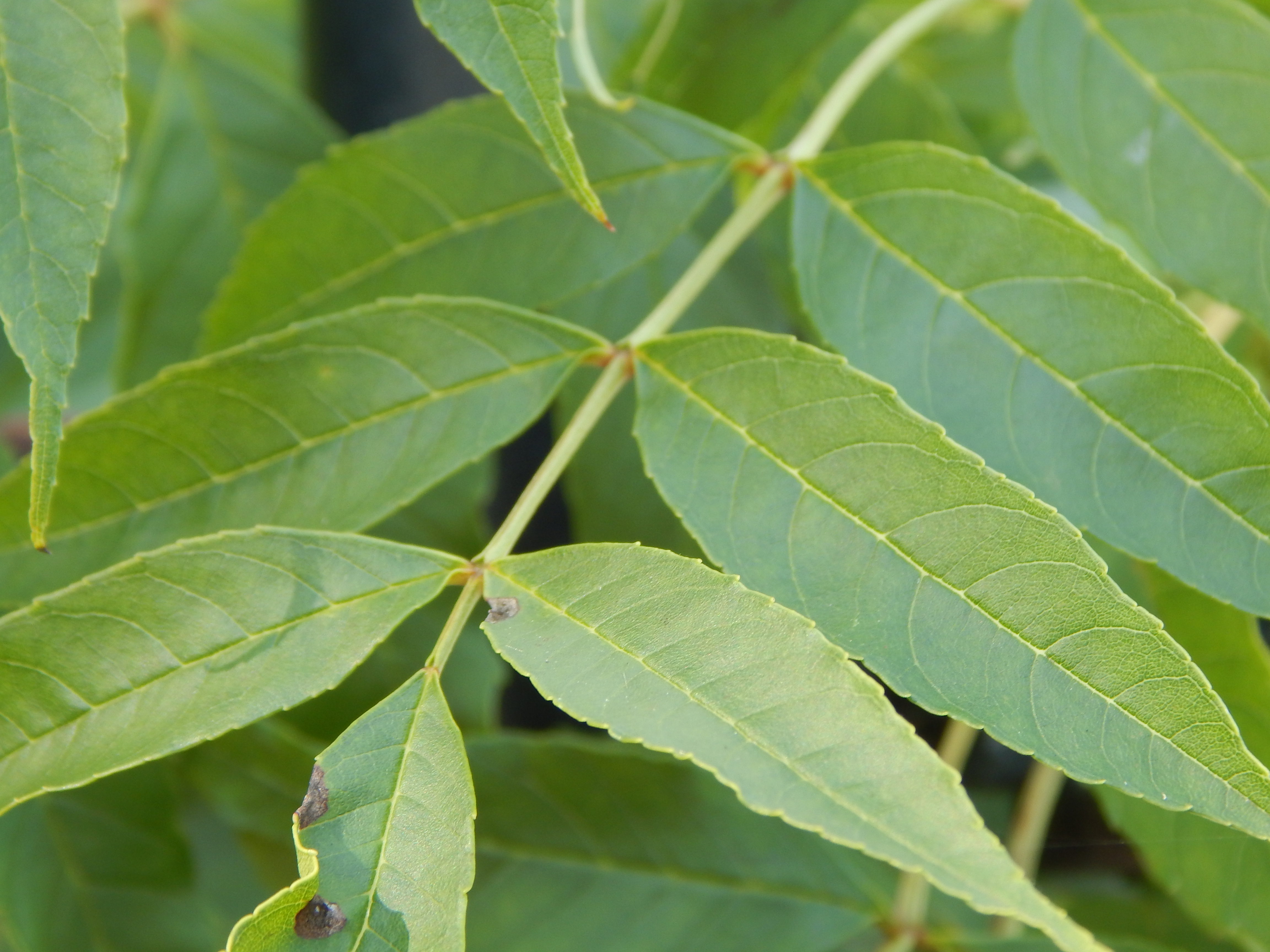
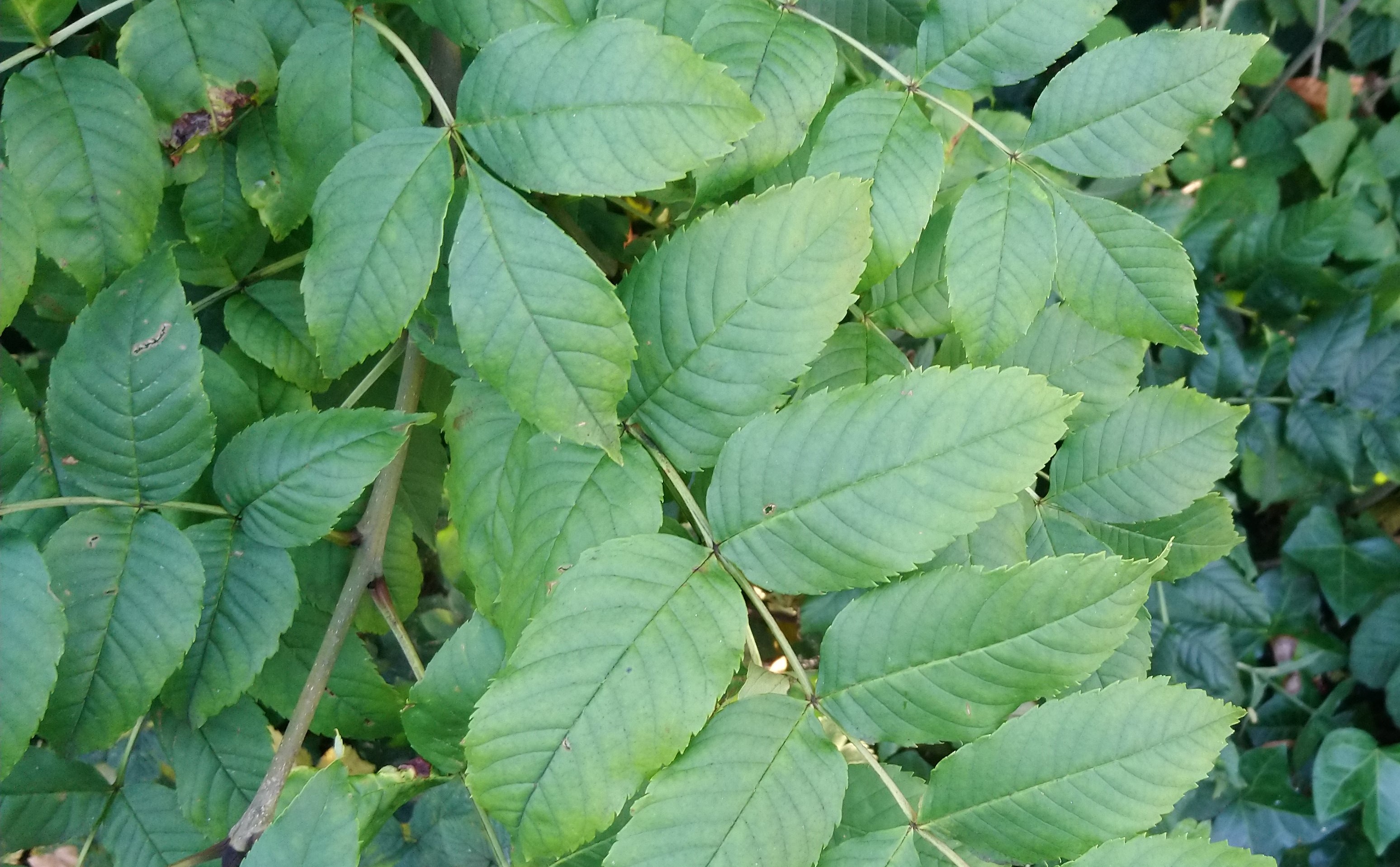
The edged of the leaves are finely serrated.
I don’t have any pictures of the flowers but their sex is interesting. They can produce both male and female flowers but it is more usual for the tree to be completely male or female. But a female tree can change to a male tree the next year or vice versa.
The fruits are much more noticeable than the flowers as its large bunches may stay on the trees over winter. they are long flat samaras, often called ash keys. They start green and turn to dark brown.
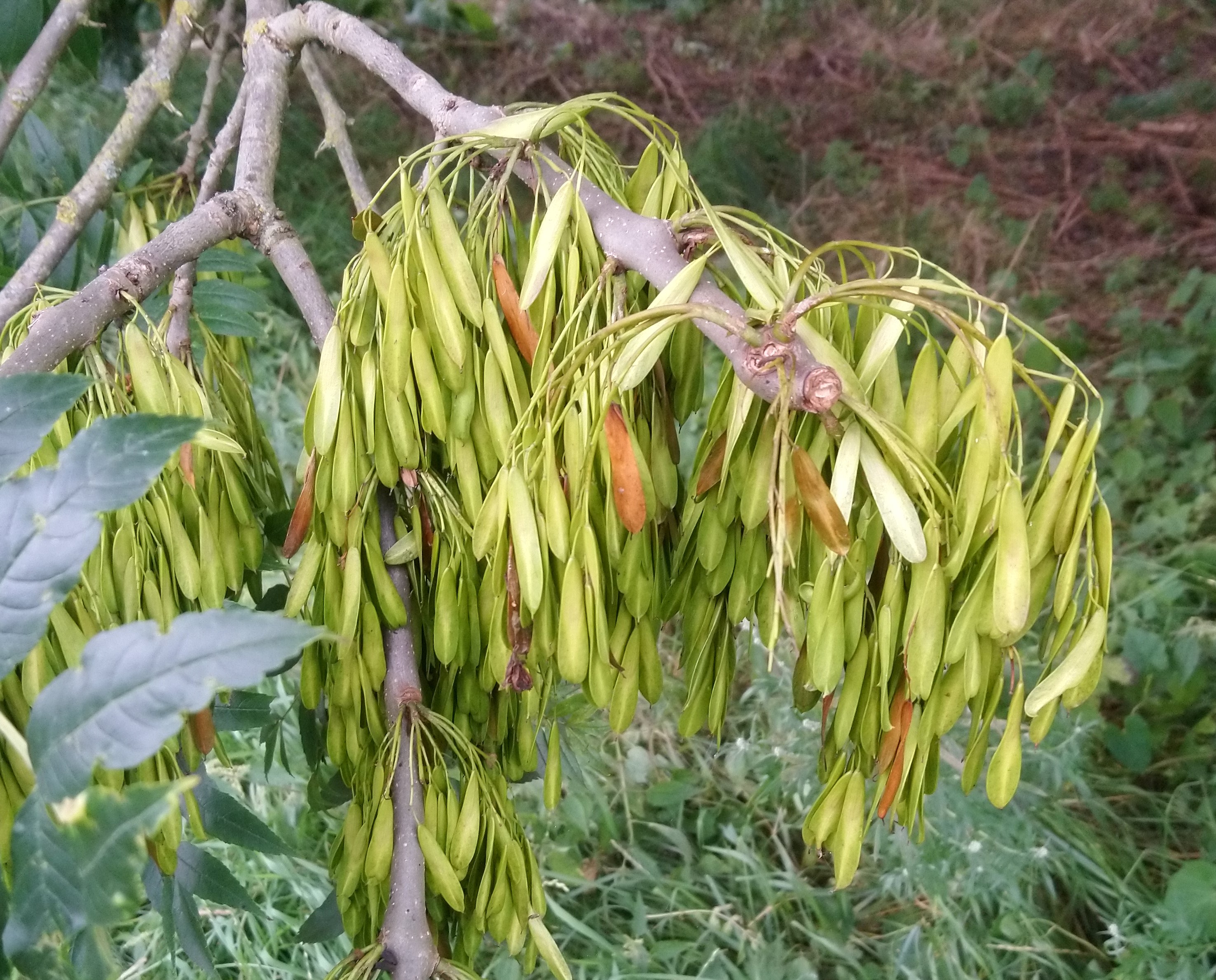
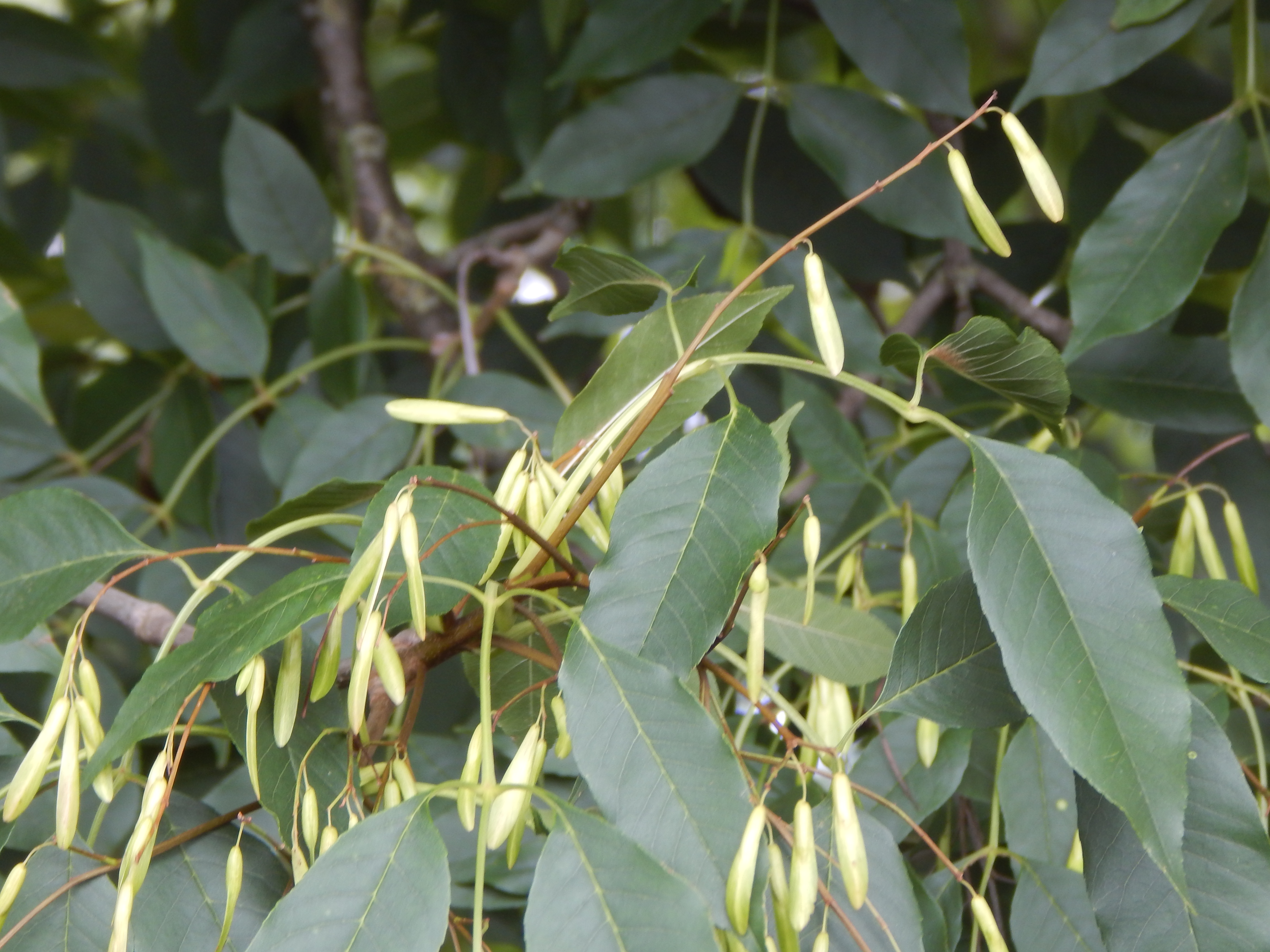

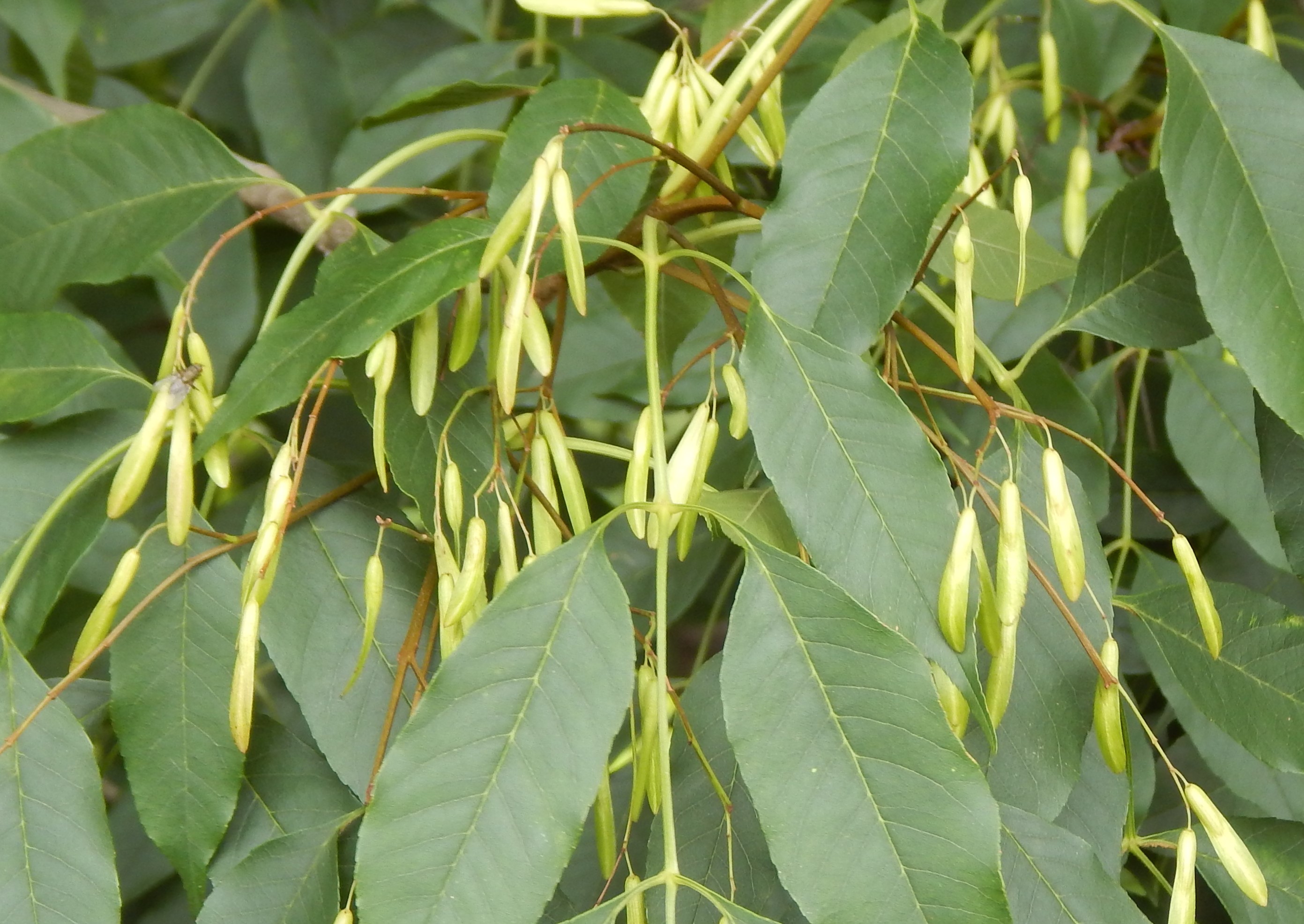
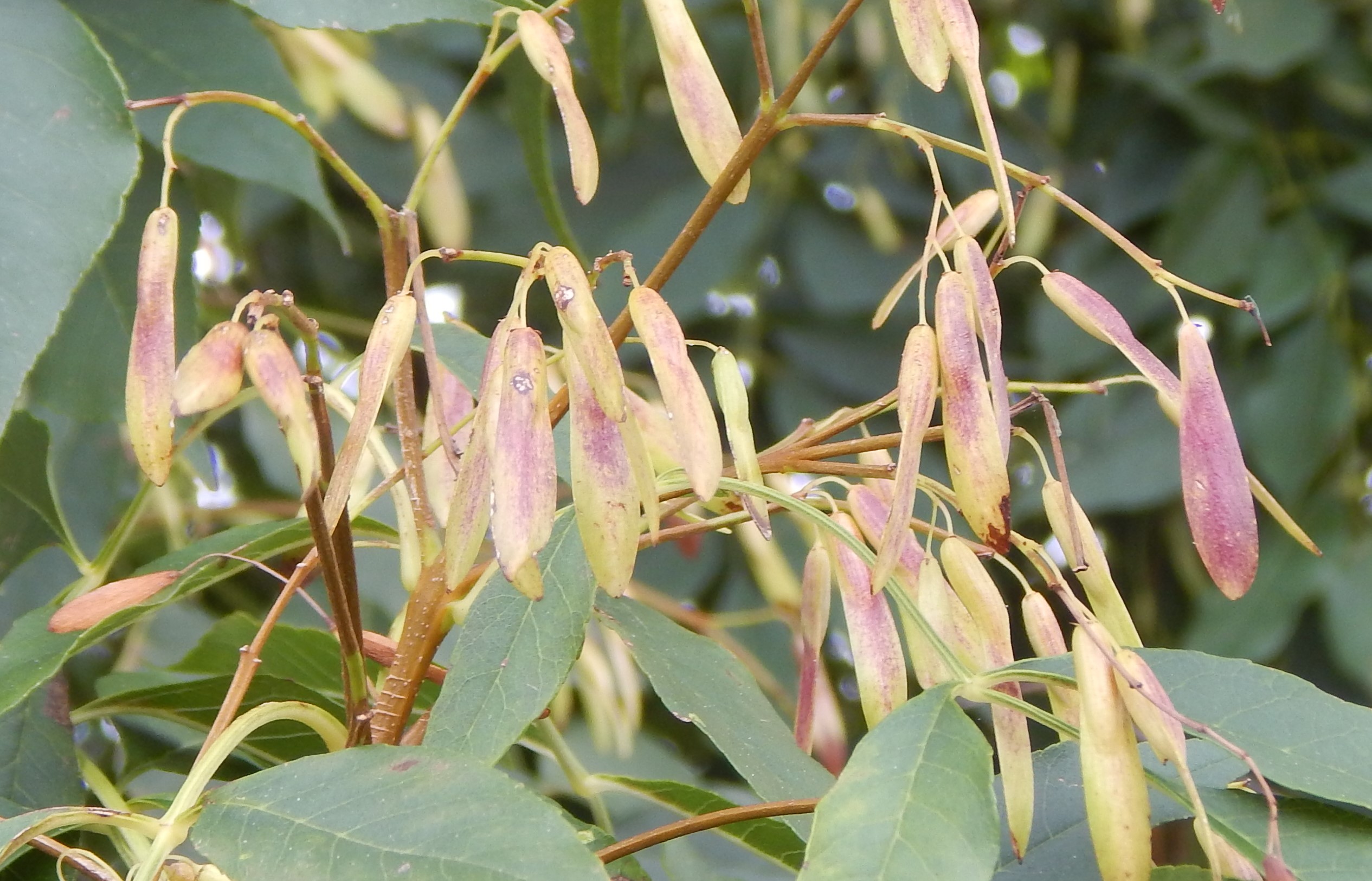
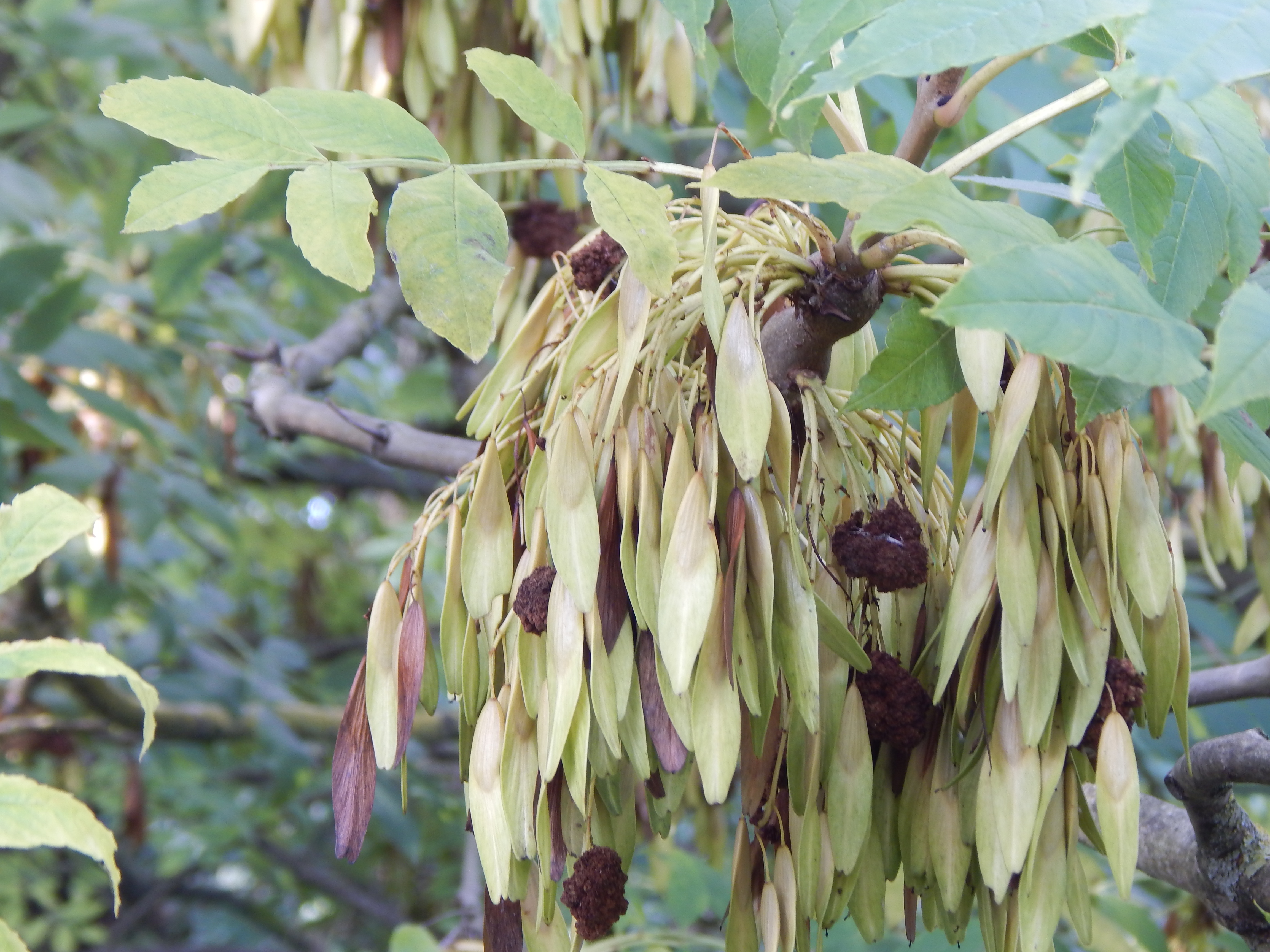
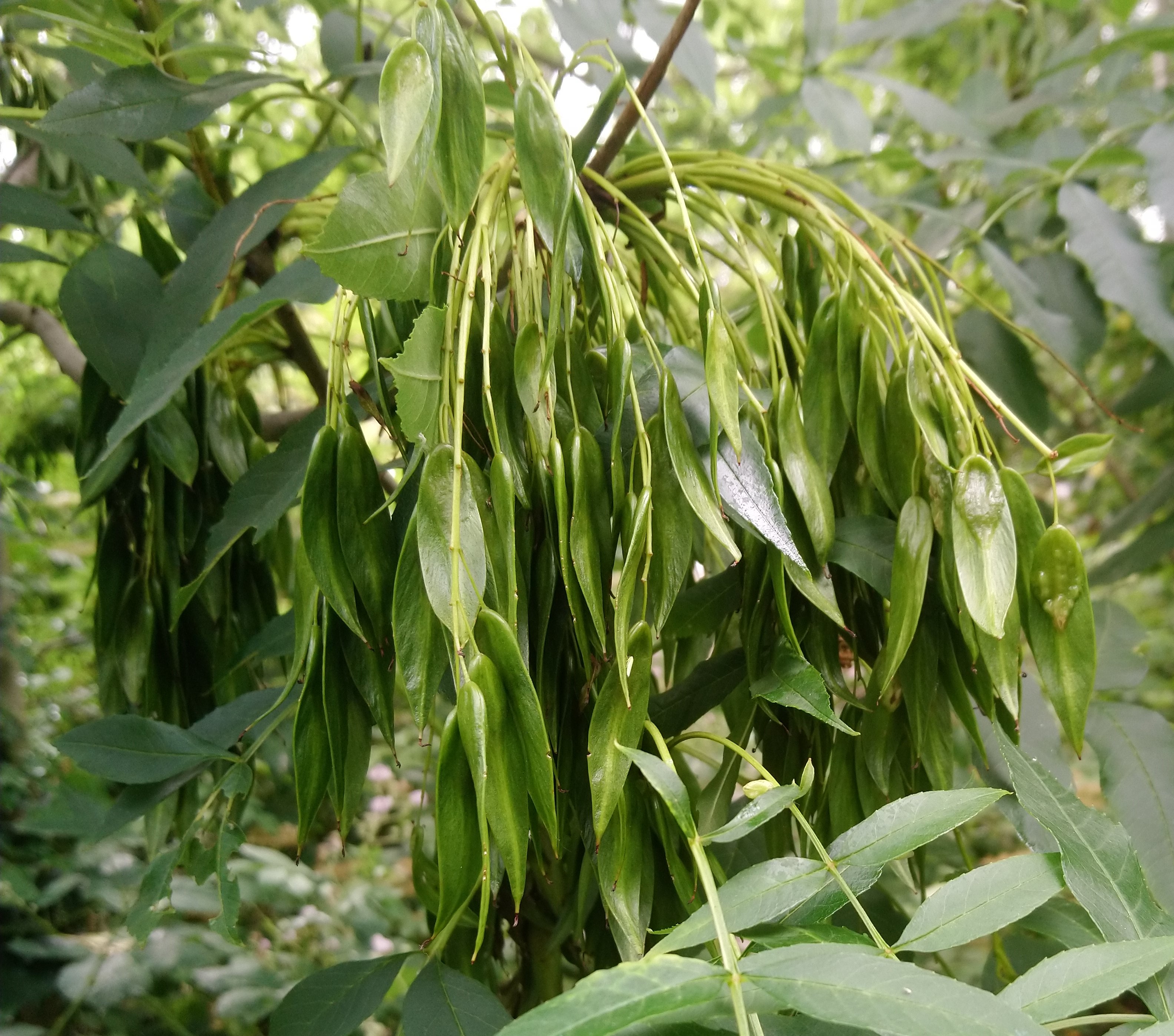

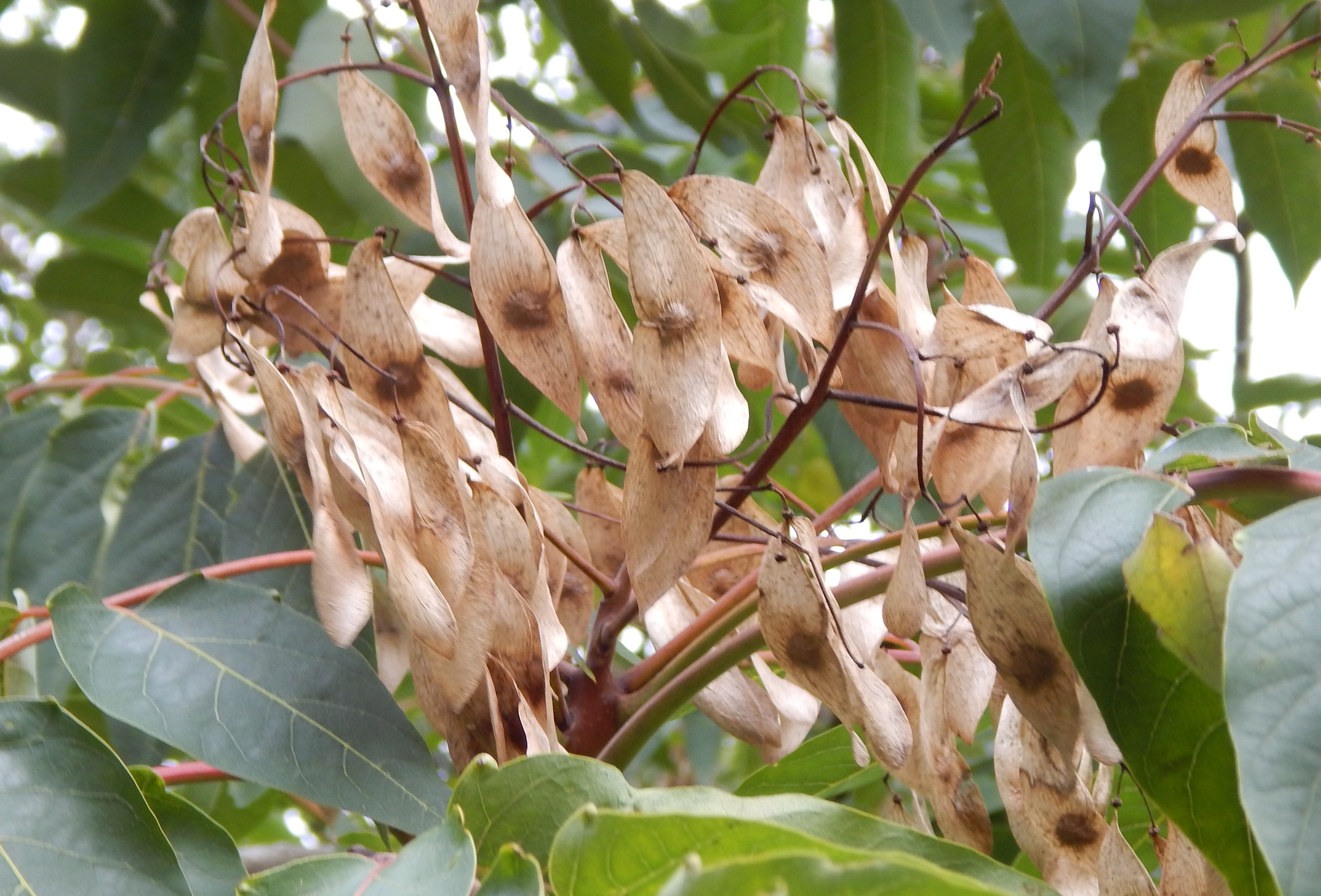
Habitat and use
Fraxinus excelsior is native to most of Europe including the UK. It is widely cultivated.
It has been widely used for timber and fuel and is the traditional wood for bows, hammers and axes, tennis racquets and snooker cues.
The light colour and grain of the wood makes it attractive for furniture and wood flooring.
Other Notes
The immense tree Yggdrasil, central to Norse mythology, is an Ash tree.
See also
Other non-native species of Ash may be cultivated, particularly Fraxinus angustifolia, the Narrow-leaved Ash, which does have narrower leaves. Some of the pictures above could be Fraxinus angustifolia.
